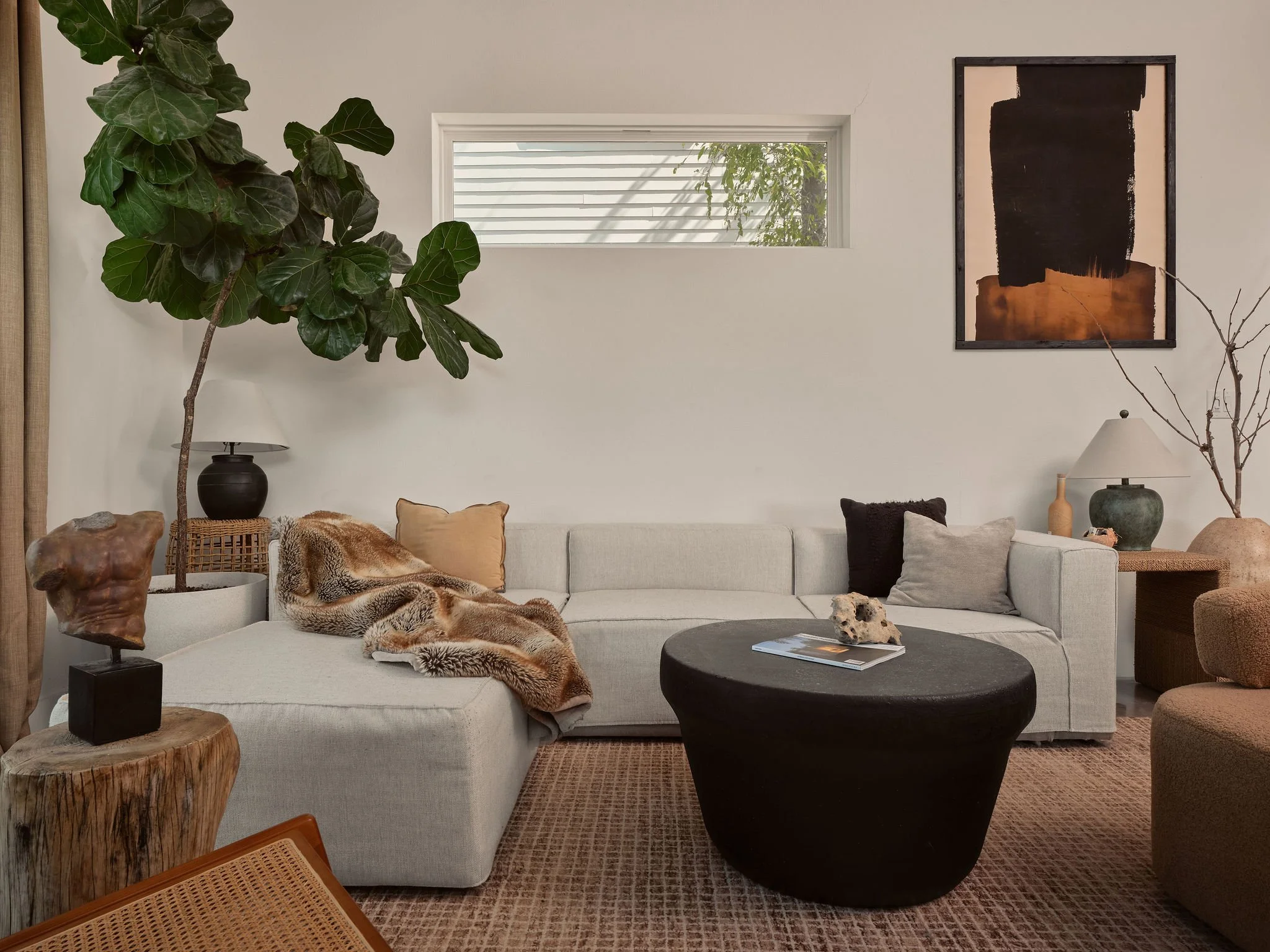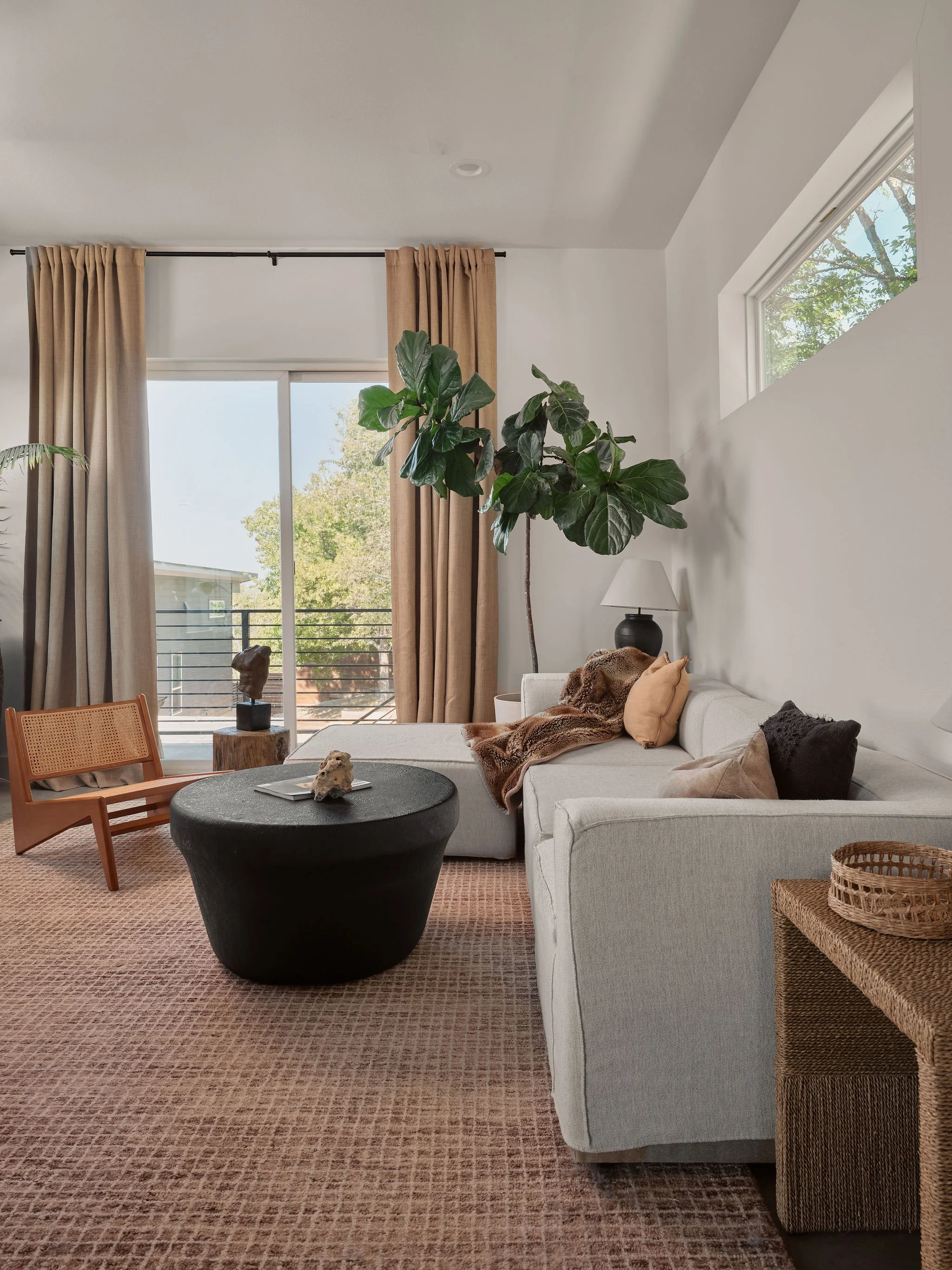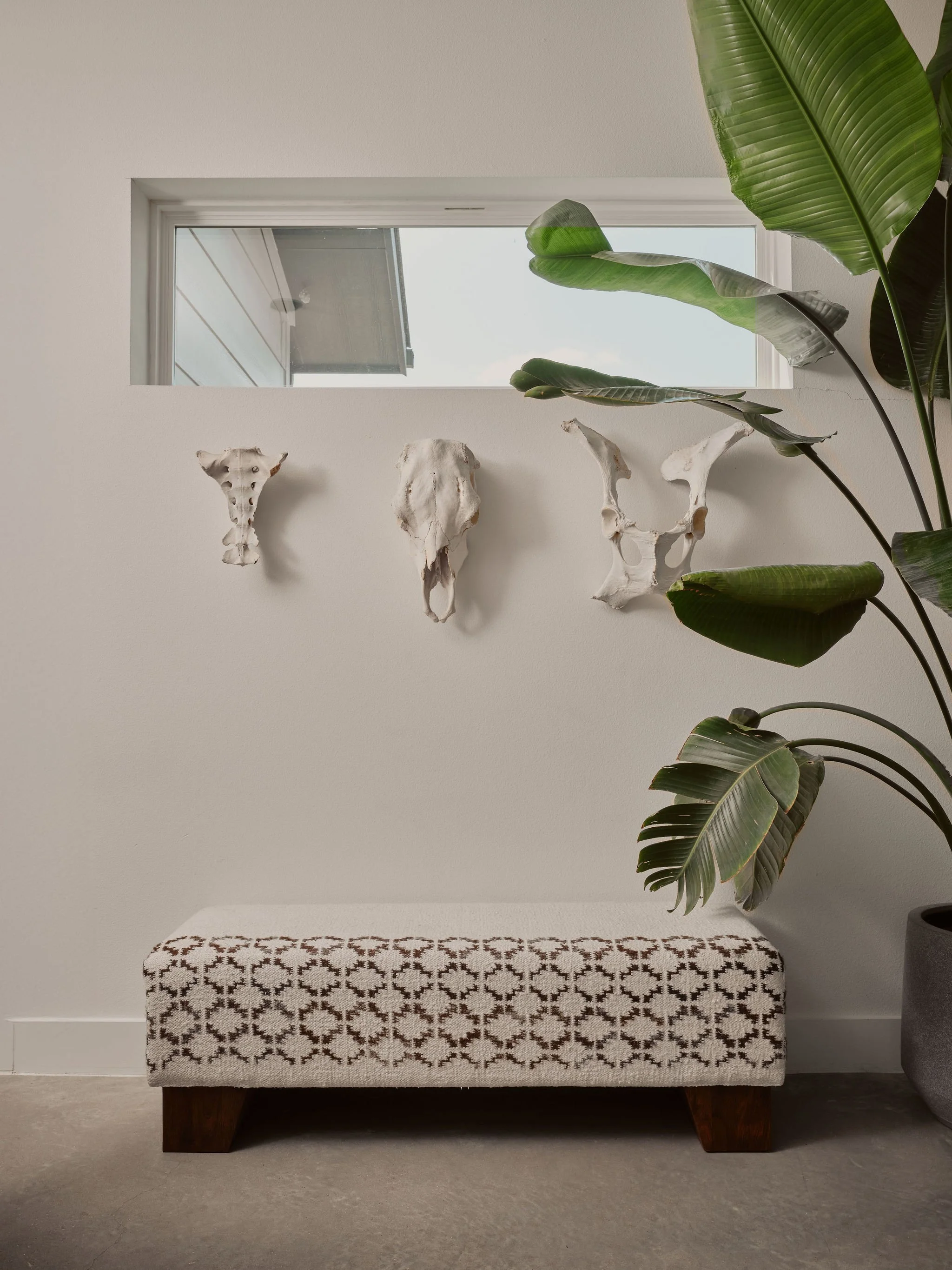
Mother nature is the best designer
This is a story about imperfection. Not just transforming a builder-grade house in East Austin, but reimagining it as a sanctuary that honors the humble, the irregular, and the fleeting. It’s the story of animal bones found on a trek to Wimberley, of weathered relics from Mexico, of a century-old Indian door that carries the weight of time. It’s a narrative not about polishing away flaws, but about elevating them into beauty. About letting decay, texture, and mother nature guide the design. And ultimately, it’s about creating a home that grounds people in what matters most: connection, presence, and the quiet reminder that nature, not modernism, is the greatest designer of all.
Resonance you can feel in your bones
Charles Vesley | Head of Design:
When I was exploring the Wabi Sabi style, I was very drawn to this idea of seeing beauty in the irregular, the modest, the unpretentious. Not about grand gestures but about quiet depth. In this house, I wanted every choice to whisper rather than shout, and create a kind of resonance you can feel in your bones.
TIM STANTON | Head of Brand:
Speaking of bones… the wall display might be my favorite part. There’s something raw and rebellious about the fact that it came from a half-lost trip to Wimberley, when we weren’t even sure if we were trespassing or not. It wasn’t planned or purchased from a catalog. It was stumbled upon, claimed, and then carefully cleaned and styled. That three-piece set doesn’t just decorate the wall, it tells the story of wandering, of curiosity, of daring to take something imperfect and elevating it.
Wabi Sabi is an act of resistance
CV: That moment in Wimberley is what Wabi Sabi is at its core. We didn’t control nature, we discovered it. We didn’t impose order, we embraced what was already there, flaws and all. And that display becomes a kind of memory capsule of that day… of being lost, of finding, of letting the world surprise us.
TS: That’s the thing. Wabi Sabi is an act of resistance. Against modernism’s obsession with the future, with geometry, with perfection. Instead, it says, “let’s be in the moment”. You did such a masterful job choosing the organic over the engineered, the one-of-a-kind over the mass-produced. Leting rust, patina, and time be collaborators, not enemies.
Telling stories from past lives
CV: And when I step back, that resistance isn’t just aesthetic, it’s cultural. It’s a nod to East Austin itself. This neighborhood was built on spontaneity, on backyard concerts and pop-up shows, on dope graffiti that emerges overnight, on the rough edges that make life interesting. By rooting this home in Wabi Sabi, it’s connecting it to that fabric, reminding me of what the city has kind of always stood for.
TS: It wasn’t about building something polished or pristine. Taking a builder-grade house… the definition of ordinary, and turning it into something bespoke, personal and alive. Every corner tells a story. Every imperfection is a feature, not a flaw.
CV: The hand-plastered pendants in the kitchen. They’re not perfectly symmetrical, but that’s the point. They look to billow kind of like clouds, carrying a sense of movement that could change with every passing hour. Or the mounted door… over a hundred years old, imported from India. The weathering isn’t something to hide, it’s something to honor. And then there’s the collection of vases and olive urns, gathered from secondhand shops and obscure towns across Mexico, each carrying the quiet stories of their past lives.
TS: And there’s that dining moment too… The whale-tail carved chairs, large table, and presiding over it all… the Jesus Piece from Lake Tapalpa in Mexico. A hand-carved Last Supper, positioned above the table where meals are shared. It’s not just an ornament, it’s a reminder. Breaking bread is sacred. Hosting is sacred. Wabi Sabi really grounds us in those truths.
Gathering is the real luxury
Charles: That piece was important to me because it embodies what this whole house is about. Connection. Humility. Service. In a world where everything is optimized, streamlined, digitized… this home insists on the human. It insists that gathering, hosting, sharing is the real luxury.
Tim: It’s funny, because you look around at the cactus, banana leaf plants, the raw wood, the hand-carved artifacts, and you realize… no algorithm could replicate this. Generative AI might be able to mimic perfection, but it can’t reproduce the poetry of decay, the richness of patina, the soul of something that’s been touched by time. Mother Nature is still the greatest designer, and this Wabi Sabi style you brought to life reminds me of that.






“It’s not about polishing away flaws, but about elevating them into beauty”
CV: That’s the paradox, isn’t it? The less you try to control, the more beauty emerges. The more you let go of modernism’s grasp, the more you discover what was always there.
TS: And that’s why this home works. Because it’s not a showroom, it’s a story. A story of imperfection, of finding instead of forcing, of honoring what is fragile and fleeting. And when you live in a space like that, it doesn’t just look beautiful. It teaches you how to see beauty everywhere else, too.
CV: Which, to me, is the ultimate goal. Not just to design a home but to shape a mindset. To remind people that beauty isn’t something you control, it’s something you allow.













